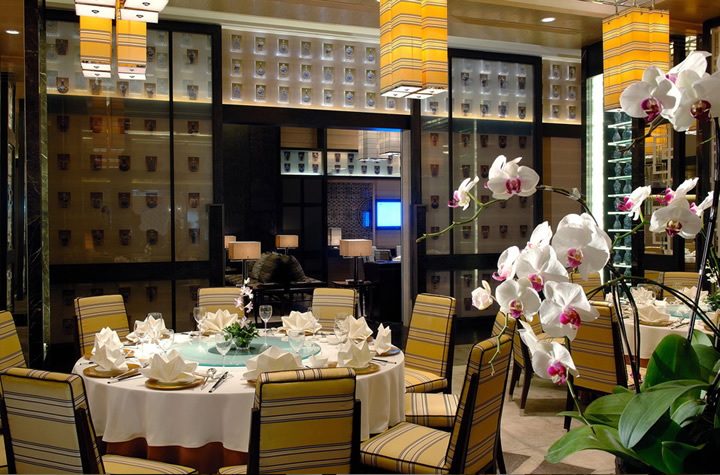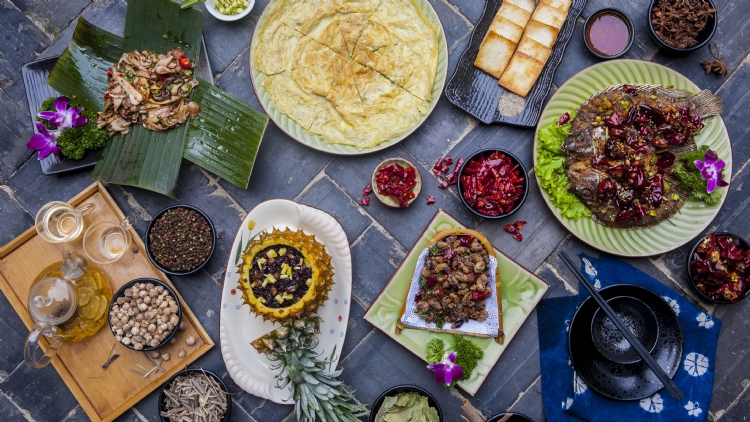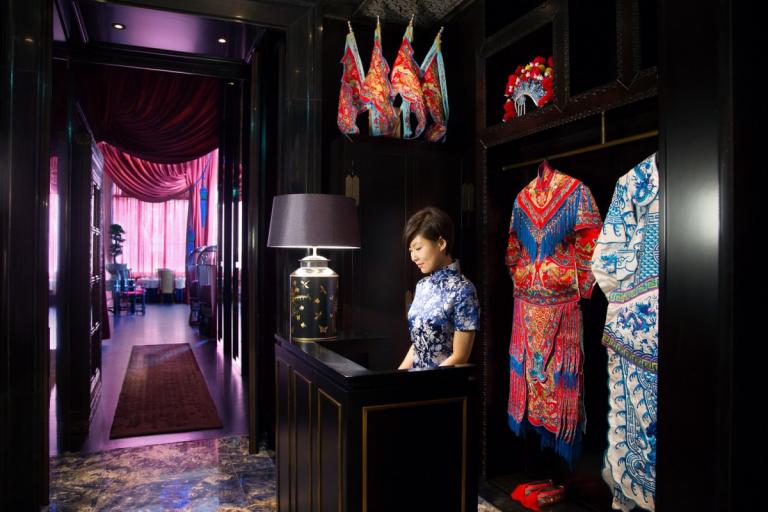Restaurants in China’s Various Regions
10 min readIn recent years, thanks to the on-going development of China’s economy and the resulting rise in living standard, people’s eating habits have begun to change. Chinese people are now placing more emphasis on the relationship between their diets and their physical health. This rise in health awareness has not only influenced eating habits and food choices, it has also driven the growth of sustainable agriculture across the country and precipitated changes in China’s food and catering industries. Conversely, the growth in the country’s economy and the opening up of its markets to international trade has meant that more and more Chinese people have had the opportunity to taste Western food. As a result Western fast food has quickly spread into China. All of these factors have helped to change the eating traditions and lifestyles of Chinese people.

In the 1950s and 1960s, all companies, including those in the catering industry, were joint state private operations. Culinary techniques, which had originally been kept as secrets by individualrestaurants, were exchanged and improved. This meant that some ‘ lost’ traditional dishes were rediscovered, while many new dishes emerged. However, at that time, Chinese society as a whole opposed extravagance and advocated frugality. As a consequence, the consumption of fine foods was regarded as corrupt and ‘ backward’. This meant that people did not generally want to eat in restaurants and, as a result, the development of cooking skills was unavoidably curbed. The vast majority of state-run restaurants at the time sold uniform authentic dishes. Their prices were high and the service they offered was often not very satisfactory.
Chinese and foreign people tasting delicacies in a restaurant located on Gui Street, Dongzhimen, Beijing. Gui Street, which is near the embassy areas, is called Beijing’s catering street. There are more than 150 shops along this street, which stretches for more than one kilometer, and restaurants account for more than 90% of these. It is a great place where foreigners and locals alike can taste authentic Chinese delicacies.
On September 30,1980, the Yuebin Restaurant opened in Beijing. This was the first restaurant run by an individual to be opened after the beginning of China’s reform and opening up process.
Because all other restaurants were run by the state at this time, the opening of this small restaurant aroused great interest around the world. The restaurant owners still clearly remember that, whenthey opened, they bought four ducks for 36 yuan and that all the dishes they cooked on that day were duck dishes. In the next few days, the restaurant was visited by ambassadors from 72 countries and by reporters from 74 news organizations.
As the economy improved and the country opened up, more and more people wanted to eat in restaurants so that they could enjoy foods that were difficult or impossible to prepare at home.
As a result,a wide variety of catering businesses of different styles and grades began to emerge.
Individual restaurant managers set up businesses in various areas, and the Chinese catering industry became a significant focus for investment. Business operators searched out experienced cooks and famous gourmets and learnt how to cook traditional delicacies from them.Hand-made dumpling restaurants and noodle restaurants became popular with city dwellers,grew and began to offer other dishes.Restaurants employed pretty girls,wearing conspicuous uniforms or cheongsams,to welcome guests with radiant smiles.Because these new private restaurants attached great importance to providing good service and high-quality food they were soon full of customers.
In the face of this stiff competition,many state-run restaurants(with their unfriendly staff and monotonous food)became less popular.Suddenly,the delicious foods that had long disappeared from China’s cities were back.To attract customers,shops selling traditional foods in the north began to use“time-honored brands”again,while Shanghai’s shops used the phrase“authentic foods”to attract business.
The Donglaishun Restaurant is located on Wangfujing Commercial Street in Beijing.The China time-honored brand “Donglaishun”was established in 1903,and began to carry out joint state-private operations in 1955.In 1996,Donglaishun started to develop its brand as a franchise chain.
Beijing citizens eating instant-boiled mutton in the Donglaishun Restaurant in the winter of 1982.
As society changed further and people moved around the country, more and more restaurants in cities like Beijing, Shanghai, Guangzhou and Shenzhen began to offer dishes with local flavors, in order to satisfy people’s local tastes. Restaurants opened that offered Sichuan cuisine, Guangdong cuisine, Hunan cuisine, Shandong cuisine, Huaiyang cuisine, Shanxi cuisine, Yunnan cuisine and Guizhou cuisine. All had their own characteristics and special dishes. Many foreigners who came to China at this time had little idea about the way in which Chinese dishes were classified according to localities. They only wanted to taste a variety of delicacies from all over the country. As a result, many restaurants began to offer dishes from various areas. Therefore, when visiting a large or medium city in China, it became possible to eat the distinctive flavors of many local dishes from all over China. Of course, to adapt to local residents’ tastes, the taste of some dishes were slightly adjusted-for example, dishes in Hunan cuisine restaurants in the north were made less spicy than they would have been made in Hunan itself.
Food fashions changed very fast, and specific local dishes remained popular for only one or two years. For example, Guangdong dishes were, at one point, popular all around the country, then boiled fish with pickled cabbage and chili(from Sichuan restaurants) became popular. The following dishes then became popular, one after the other: Xinjiang’s kebabs,”Mao-style pork braised in soy sauce”(from Hunan cuisine restuarants), Henan’s mutton stewed in soy sauce, Chongqing’s spicy hot pots, northeastern dumplings, Shanghai’s “local dishes”and finally Sichuan’s fish filets in hot chili oil and spicy crabs. Today, food tastes change as fast as fashions change in the world of clothes. Popular foods emerge one after another, with foods rotating in and out of fashion. In recent years, family-style restaurants offering “private home dishes”have emerged in places like Beijing, Shanghai and Taipei. These restaurants are usually not large. They attract customers with their original dishes and desserts, and focus on providing an elegant, private dining environment. Some have a membership system and some require reservations to be made in advance. They are favored by wealthy urbanites. Buffets have also become popular because they give people the freedom to choose their food themselves. In comparison with the a la carte style of dining common in most Chinese restaurants, the big advantage of a buffet is that it can cater to many different taste requirements. Diners can take what they need and only taste the delicacies they like. They can also enjoy talking to each other in a relaxed environment. Before the 1990s, when people ate in restaurants they felt satisfied as long as the prices they were charged were cheap and the quantity of food they were served was sufficient. Today, people’s attitudes have changed and they no longer go to restaurants simply to eat, they also visit such establishments in order to enjoy a refined and comfortable environment and attentive service. As a result, many restaurants have started to serve home dishes to their customers. They do this because these dishes attract families who want to feel at ease and who want to eat familiar, comforting dishes in familiar, comforting surroundings. In other words, they attract customers who want to feel as if they are eating in their own homes. At first, these home-dish restaurants were not large, did not have a wide choice of dishes available and only offered dishes such as Kung Pao chicken, fish-flavored shredded pork and fruit salads. However, in recent years, people’s eating habits have changed and more birthday parties and other celebrations have begun to be held in public. As a result, snacks, fast food and home dishes have become very popular and the variety of food on offer at home-dish restaurants has grown. The rise of these restaurants has changed the eating habits of ordinary people and hasalso injected new vitality into the fiercely competitive Chinese catering market. Signboards with the words”home dishes”in various fonts have blossomed along high streets and back lanes, and restaurants have become famous for offering home dishes such as “Meizhou Dongpo”and “Guo Lin Home Dishes”. While home dishes have made the step up from the family kitchen to high-street restaurants, so some more sophisticated dishes have made the step down from the menus of fine dining establishments to those of home dish restaurants. For example, Beijing roast duck, which is a very expensive dish when served at a high-class restaurant, has appeared on the dining tables of some home dish restaurants at a much reduced price. Such dishes, with their exotic raw materials, complex preparation methods and more affordable prices, have been warmly welcomed by ordinary people.
When foreigners first come to China, they normally want to experience the country’s charm and its traditional food. The often do this by visiting a “time-honored”restaurant that has a strong traditional atmosphere. In Beijing such restaurants include the Quanjude, the Bianyifang, the Donglaishun, the Fengzeyuan, the Fangshan, the Liuquanju, the Shaguoju, the Kaorouji, the Kaorouwan and the Gongdelin. In Shanghai they include the Shanghai Classical Hotel, the Laozhengxing Restaurant and the Meilongzhen Restaurant. In Tianjin they include the Goubuli Steamed Stuffed Bun Restaurant, the Hongqishun Restaurant and the Tianyifang Restaurant.

Most of these restaurants have been serving food for several decades or more(some have been in existence for more than 100 years). Despite fierce competition, these traditional restaurants still attract customers thanks to their unique signature dishes and their historical and cultural importance.
Beijing’s famous,100-year-old Quanjude Roast Duck Restaurant provides a good example of this type of historic eating establishment. It was not China’s first roast duck restaurant(this was the Bianyifang Roast Duck Restaurant), however it rapidly eclipsed its earlier rival. Many people like eating Quanjude roast duck and the restaurant has a particularly high reputation amongst foreigners who like experiencing its historic character and atmosphere. Roast duck at the Quanjude is cooked using a hanging furnace-which gives the food its unique characteristics. The restaurant’s speciality is its unique Quanjude all-duck feast. The Quanjude Roast Duck Restaurant has more than 100 branches in China, and is the first domestic time-honored catering enterprise to have been listed on the country’s A-share market.
The Donglaishun Restaurant is another famous Beijing restaurant. It is located along Wangfujing Street, which is the busiest area in Beijing. This restaurant started life as a very small Muslim porridge stall selling instant-boiled mutton. It is now a famous, time-honored restaurant that is second to none in its field.
Chinese and foreign restaurants at Xinjiekou,Nanjing it has also developed many Muslim stir-fried dishes such as smashed chicken and white fungus soup,roast lamb legs,boiled sheep innards,hand-grasped mutton and fried sheep tails.It also sellsmore than 200 dishes and desserts.In addition,it is famous for its snacks,which come in a variety of flavors.These snacks include fried butter cakes and sweet walnut soup.In the Donglaishun Restaurant,one can not only enjoy delicious food,one can also experience a relaxed mood that is typical of the old city.
Chinese fast food restaurants have emerged in the last ten years in all of China’s cities.They are different to the country’s local dish restaurants,home dish restaurants and time-honored brand restaurants.They mirror the way in which foreign fast food outlets operate and have long opening hours,allowing customers to get food quickly at any time of the day.The foods they sell have local tastes and traditional characteristics.At the same time Western fast food chain restaurants,such as McDonald’s,KFC and Pizza Hut,have also sprung up in China’s cities.These restaurants serve Western fast foods,including colas,hamburgers and pizzas.Though expensive,they are becoming accepted by more and more Chinese people,and they have started to do very well.
Although Western fast-food restaurants have only recently taken off in China,the history of Western-style food in the country is actually quite long. When the Italian Marco Polo traveled in China about 700 years ago, he introduced certain methods of preparing European dishes anddesserts. Back then, Western-style food only really appeared in China at the home banquets of foreigners. It was also occasionally prepared in imperial palaces and in the residences of princes.
In the late 19h century, more and more foreigners came to live in China. Many of the foreignersemployed Chinese people who, in turn, learnt Western-style food preparation skills. Over time, itbecame more common for Chinese people to prepare and eat Western-style food, and the provision of this kind of food became a part of the country’s catering industry.
In the 30-plus years that have elapsed since the beginning of reform in China and the opening up of the country-and especially in the new century-more and more Chinese restaurants have begun to offer special dishes drawn from the cuisines of various countries. These restaurantsinclude stand-alone restaurants in neighborhoods where many foreigners live and work. Special catering streets have also opened in key tourist cities to sell various foods with foreign flavors.
These Western-style restaurants interpret the food cultures and customs of other countries in a uniquely Chinese way. This has not only enriched the daily life of Chinese people, it has also boosted the prosperity of China’s catering industry. It addition, it has allowed people from different countries to feel that their cuisines are respected and enjoyed.









